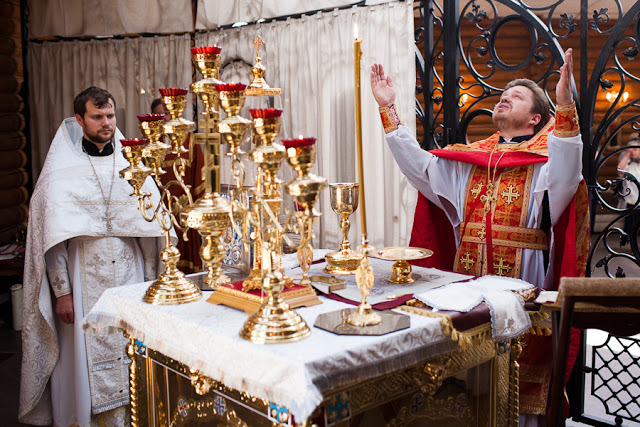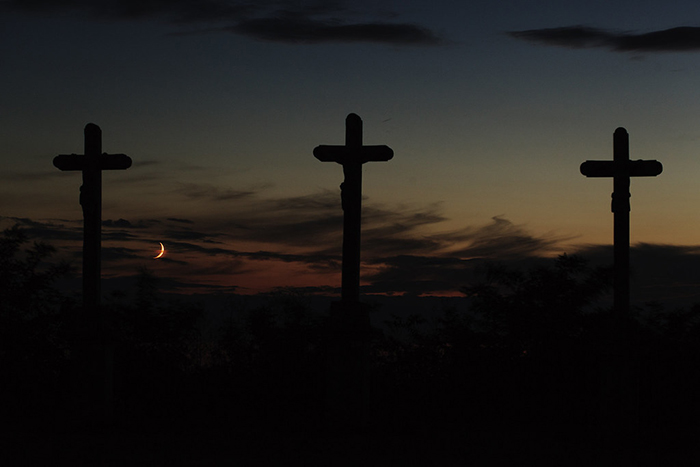
Archaeologists about the last days of Christ’s earthly life

Archaeological evidence does not tell us about the essence of the Cross sacrifice and the Resurrection of Christ, but it helps us to understand the context of the Gospel events. The fossil records provide a visible confirmation of the faith, with their help we understand that the Gospels contain precisely a historical, not mythological narrative.
Where did the Last Supper take place?
Nowadays in Jerusalem, they show an approximate place of the Last Supper, which is called the Cenacle room. It is the remains of a church built around the 14th century by the Franciscans and subsequently converted by the Arabs into a mosque. Therefore, we must understand that the current Cenacle room is not the same room where the Last Supper took place. Moreover, the very location of the house described in the Gospels can be specified just approximately.
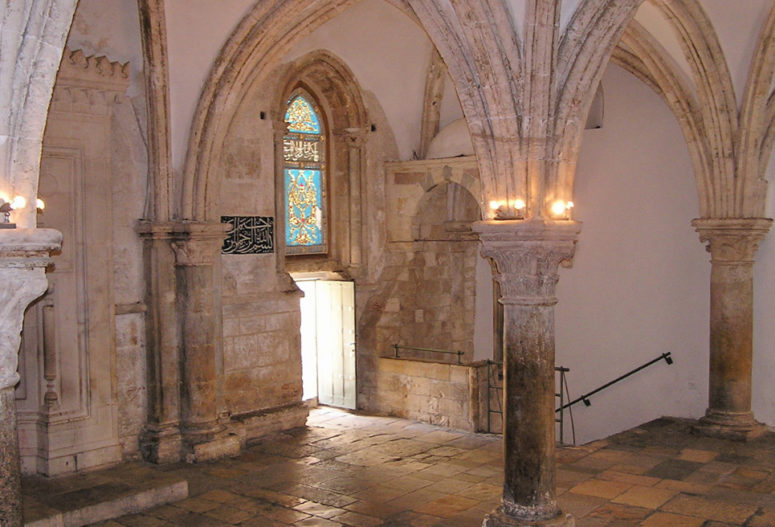
Currently, under the Cenacle room there is a synagogue in which they show the tomb of King David. If this is indeed the same tomb, then the words of the Apostle Peter said on the day of Pentecost become clear: Men and brethren, let me freely speak unto you of the patriarch David, that he is both dead and buried, and his sepulchre is with us unto this day (Acts 2:29).
On this day, the apostles gathered in the same place where the Last Supper took place, and according to tradition, it was the house of the Apostle Mark. The Apostle Peter seems to be pointing to the tomb. In this case, indeed, the Cenacle room can be connected with the tomb of King David, because according to legend, the family of the Apostle John Mark was the keeper of the tomb of King David.
What was the city like under Herod?

Herod used Roman technology of the time when building. And, indeed, we find the ruins of the beautiful large buildings of the Roman period of city existance. The temple platform, even by modern standards, is impressive in size.
In the Gospel there are words that say that the apostles were struck by the power of the Jerusalem buildings: Master, see what manner of stones and what buildings are here! (Mark 13:1)
Which way did Christ go to Calvary?
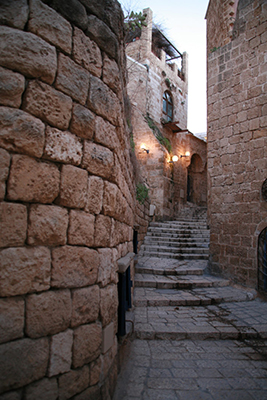
From the archaeological point of view, the greatest questions are raised by the so-called Sorrowful Path of the Lord, or Via Dolorosa, along which numerous Christian pilgrims pass from Gethsemane to the Church of the Holy Sepulcher.
You must understand that Via Dolorosa is the path of Catholic cross procession. It was finally established after the Crusades in the XIV century. The Franciscans decided that the probable location of the praetorium of Pontius Pilate is the fortress of Anthony. The route of cross procession, which used to be on the south side of the Temple platform, was moved closer to the fortress. But the Byzantine pilgrims went different way, and this way was much closer to what can be specified on the basis of archeological data.
Such memorable places of Jerusalem as Via Dolorosa should be treated as a kind of icon on the ground. And the icon, as you know, although it does not transmit, unlike the portrait, the image with thorough accuracy, nevertheless opens the way to a meeting with the event or the person depicted.
Where did Pilate judge Christ?
Another question that remains open for archaeologists is the place of Pilate’s trial of Christ. Probably, this event did not take place in the fortress of Anthony, but in the former palace of Herod the Great, which was at the disposal of Pontius Pilate.
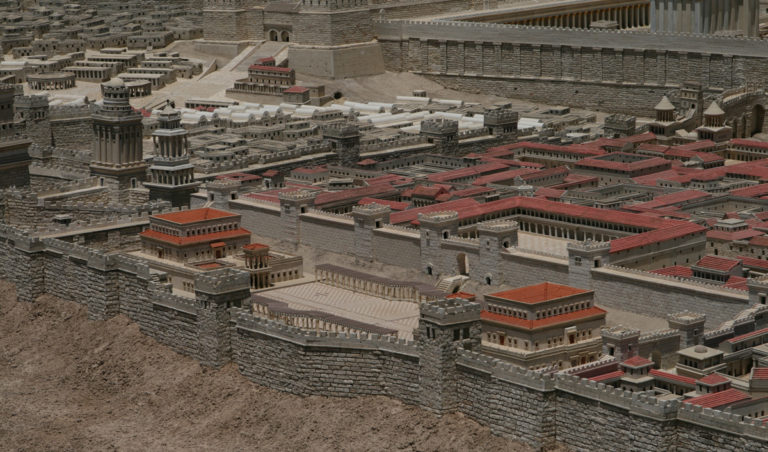
It is interesting that Josephus Flavius describes the actions of the procurator of Judea, Gessius Florus, precisely in the palace: “Now at this time Florus took up his quarters at the palace; and on the next day he had his tribunal set before it, and sat upon it. The high priests, and the men of power, and those of the greatest eminence in the city, came all before that tribunal” (The Wars of the Jews II, 14:8).
Where are Calvary and the Holy Sepulcher?
Another no less serious question that has been worrying people’s minds for many centuries is the authenticity of the place of suffering of the Savior and the authenticity of the Holy Sepulcher. After the Bar Kokhba revolt (132-135), Jerusalem was refounded as a Graeco-Roman city under the name of Aelia Capitolina.In place of the Holy Sepulcher and Calvary, a huge temple of Aphrodite was built. Calvary, located outside the city walls, towered above the site of the quarry, which was completely filled up and leveled. At the same time, the rocky ledge of Calavary, about 5 meters high, was not hewn, but went directly onto the street. Consequently, when Bishop Makarius and the Equal-to-the-Apostles Empress Helen searched for the Cross and the Sepulcher of the Lord, there was a noticeable landmark, and the place could not be lost. The Lord’s Cross was thrown into the catchment tank, which became unusable due to a crack. The opening of the tank is still visible in the ceiling above the place where the Cross was acquired.
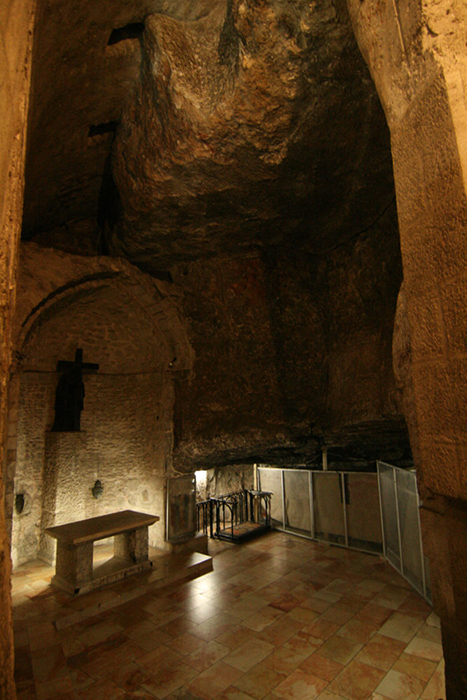
In the XIX century, the English general Gordon, rightly assuming the location of Calvary outside the city walls, decided that it was in a completely different place. This theory, however, did not take into account the fact that the borders of Jerusalem at the time of Christ and the borders of the modern city do not coincide.
Nevertheless, as an alternative to Calvary, a rock located north of Jerusalem was identified, resembling a skull in shape, with two graves inside. This place is known as the Garden Tomb.
Thus, at present, traditional faiths, such as Orthodox Christians, Catholics, Armenians, Syrians and Ethiopians, consider the current location of the Holy Sepulcher to be authentic, while the “alternative” Calvary is a gathering place for various Protestant groups: Anglicans, Baptists and other Christian denominations.
In this regard, the fossil records carried out by the head of the Russian Ecclesiastical Mission in Jerusalem, archimandrite Antonin (Kapustin) are of great interest. On the site where our Alexander Metochion is now located, the foundation of the wall and gate of the times of Herod were found. It was here that the Savior was supposed to go by to Calvary.
Another argument confirming the authenticity of the Holy Sepulcher is the study of the tomb itself. From the Gospel we know that Christ was laid in a new sepulchre, wherein was never man yet laid (John 19:41).

The sepulcher of the Lord has only one niche with a deathbed in which it was possible to put the body of the deceased. Traditional tombs though had several side niches in which the bodies of the dead were laid. After about a year, the bones of a person were taken, washed with rose water and put into a special box (ossuary).
Why is the tomb of the Savior so small, and has one deathbed? The small size of the tomb, just indicates that it was new, which means it was used for the first and only time. The fact that the tomb in which the Lord was placed was not developed further, indicates that its owner did not dare to bury anyone else in it. The tomb of Joseph of Arimathea, the owner of the tomb, who arranged the burial of the Savior, is located nearby.
Translated by The Catalogue of Good Deeds
Source: https://foma.ru/gde-naxoditsya-golgofa.html

